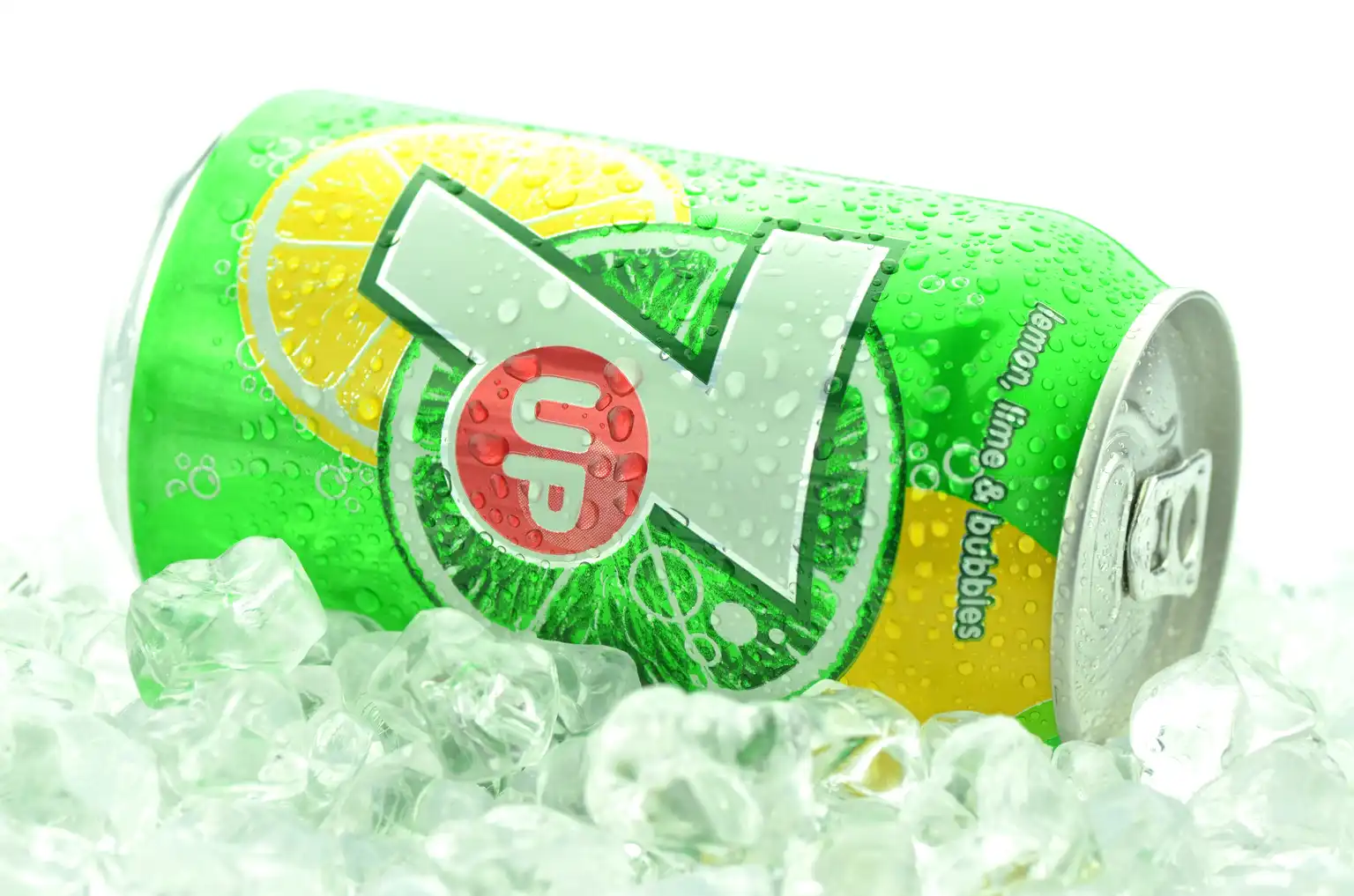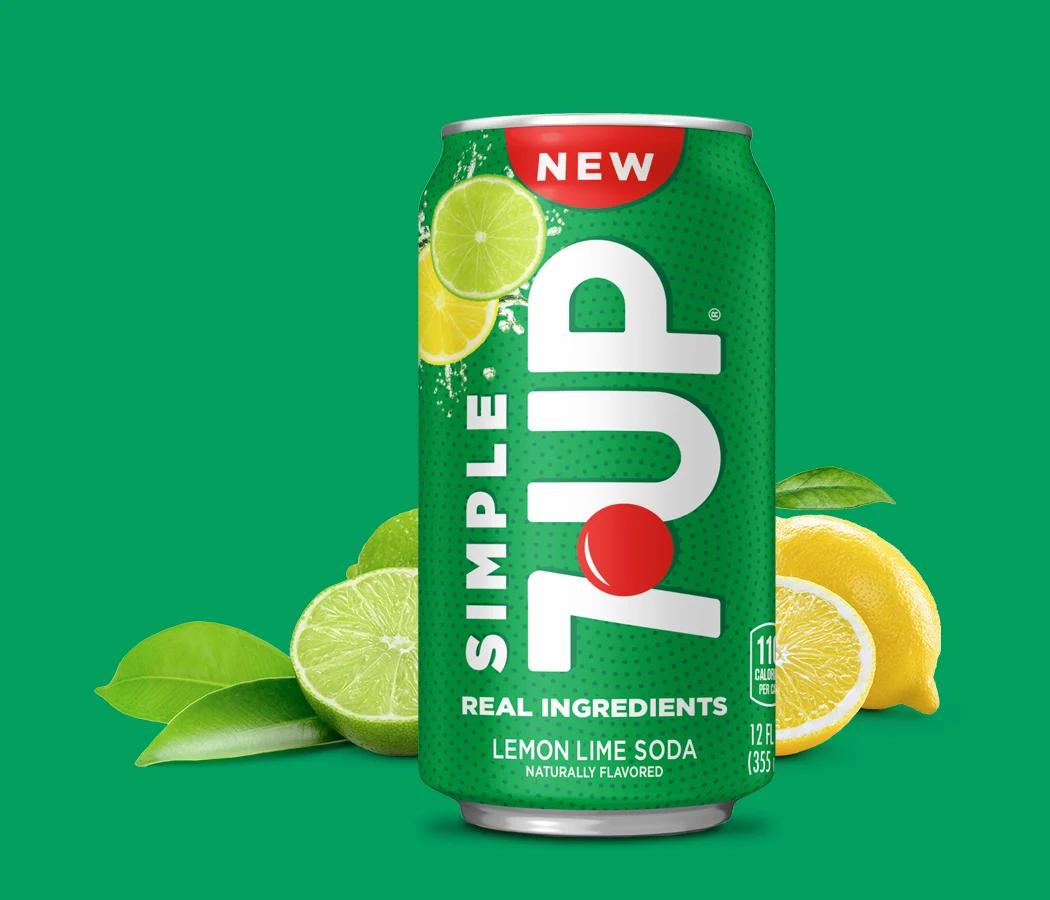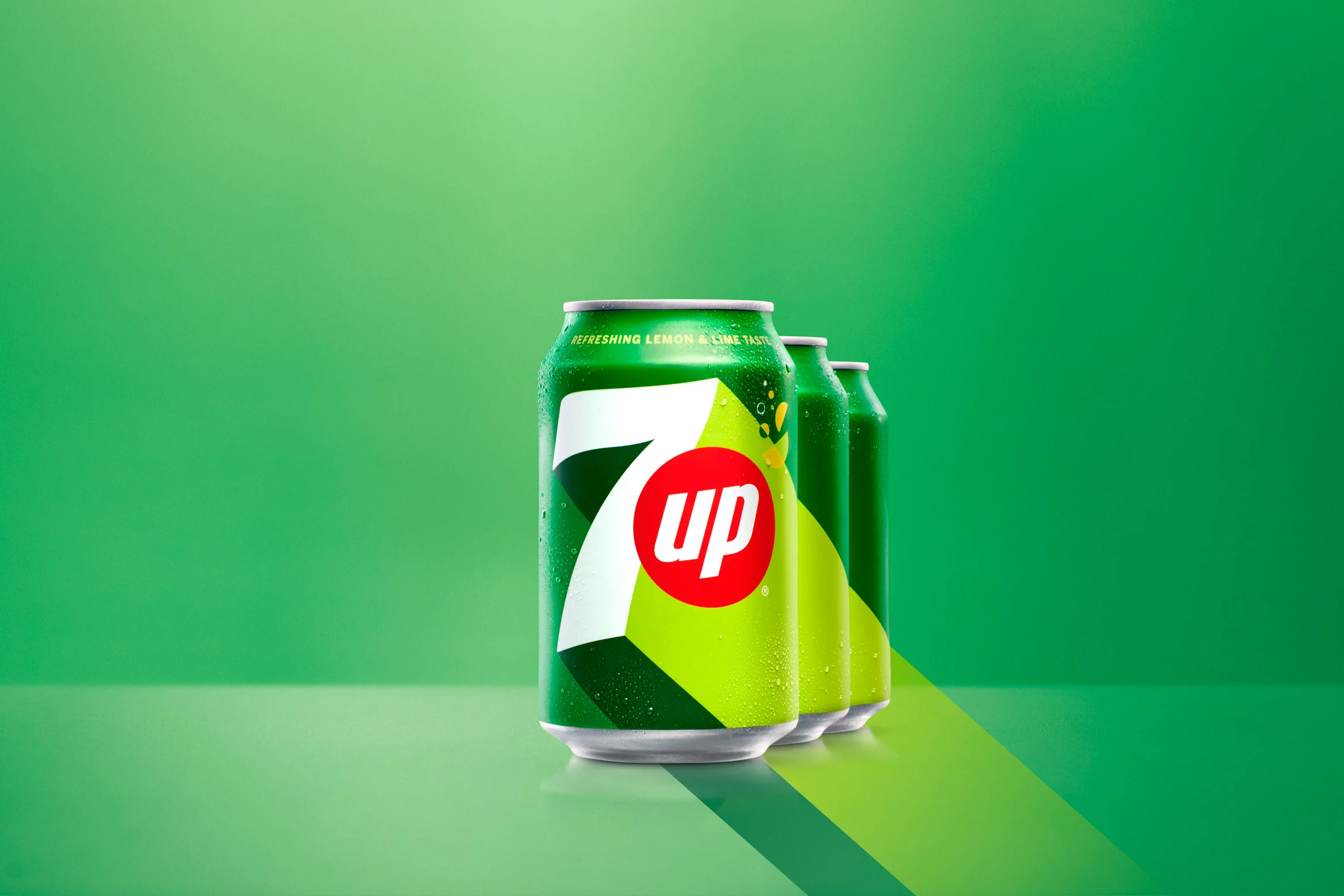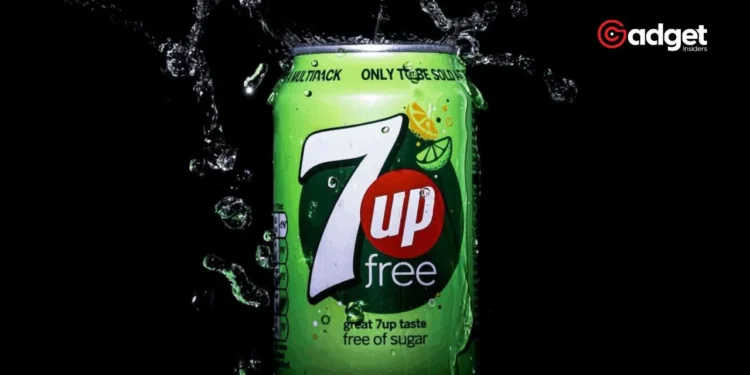Once a staple in American households and soda fountains across the nation, 7 Up’s journey from inception to its peak, and eventual decline into the shadows of its competitors, reads like a classic American business saga. Introduced in 1929 as “Bib-Label Lithiated Lemon-Lime Soda,” 7 Up quickly became more than just a soft drink; it was a cultural phenomenon. The brainchild of Charles Leiper Grigg, who invested two years in perfecting a unique lemon-lime flavor, 7 Up was originally marketed as a wholesome alternative to the era’s typical sodas, promising irresistible appeal with its “distinctive” taste and effervescent charm.

The Uncola Revolution
During the 1960s and 70s, 7 Up distinguished itself from the cola-dominated market with its innovative “Uncola” advertising campaign. Spearheaded by the JWT advertising agency, these campaigns brilliantly leveraged anti-establishment sentiments and a growing public interest in healthier beverage options. 7 Up was positioned as lighter, fruitier, and caffeine-free — a clear alternative to the darker colas like Coca-Cola and Pepsi. This branding was not just successful; it was revolutionary, pushing 7 Up to become the world’s third best-selling soft drink by the 1970s.
7up – Soft drink
The international distributer of 7up, PepsiCo, bought SodaStream for $3.2bn and owns 50% of Sabra both of which had taken advantage of the Israeli occupation of Palestine.#FreePalestine #BoycottIsrael #BoycottIsraeliProducts pic.twitter.com/ZDFQT5tzZf
— Boycott Israel (@Boycottt_israel) May 5, 2024
Culinary Versatility
Beyond just a drink, 7 Up carved out a niche in American kitchens and bars. It was the secret ingredient in everything from jello molds to holiday punch. Its mixability peaked with the famous 7&7 cocktail, blending Seagram’s 7 Crown whiskey with 7 Up, becoming a staple in bars across America. The brand’s versatility only added to its popularity, making it a fixture not just in drink holders, but also in recipe books across the country.

Challenges on the Horizon
The landscape began to shift in the 1980s with the introduction of Diet Coke and the rising popularity of artificial sweeteners. 7 Up’s sales started to wane as consumer preferences moved towards diet sodas and more diverse beverage options. The acquisition by Philip Morris and later Cadbury Schweppes did little to reinvigorate the brand. By 1986, Sprite, owned by Coca-Cola, had overtaken 7 Up, bolstered by aggressive marketing campaigns and celebrity endorsements that resonated with younger demographics.
7 Up’s Struggles: Recipe Changes and Marketing Mishaps
The turn of the century saw another attempt to reinvent itself with several recipe changes aimed at enhancing its flavor to compete with Sprite. However, these changes, coupled with a controversial marketing campaign in 1999 that backfired, led to further decline. The brand faced significant criticism and legal challenges over its “all-natural” claims, as the drink contained high-fructose corn syrup, reflecting a misstep in tapping into the growing demand for healthier, natural products.
Stagnation in a Changing Market
As the 21st century progressed, the full-calorie soda market saw a significant decline. According to industry analysts, the sales of sugary drinks dropped as Americans became increasingly health-conscious. This shift dramatically affected brands like 7 Up, which struggled to maintain its relevance in a market flooded with an array of healthier, lower-calorie beverages. By 2022, the brand held less than 3% of the market share, a stark contrast to its former glory.

Looking to the Future
Despite these challenges, the soda has not disappeared entirely. In 2023, the brand attempted a resurgence with a new campaign focused on “refreshing UPliftment,” introducing redesigned packaging and a sugar-free version of the drink, Zero Sugar. While these efforts show promise, only time will tell if the beverage can regain its position in the highly competitive beverage market.
7 Up’s story is a testament to the dynamic nature of brand fortunes in the face of shifting consumer tastes and market dynamics. From its peak as a beloved drink to its struggle to stay relevant, Journey offers valuable lessons on innovation, adaptability, and the importance of staying true to a brand’s heritage while navigating the future.










